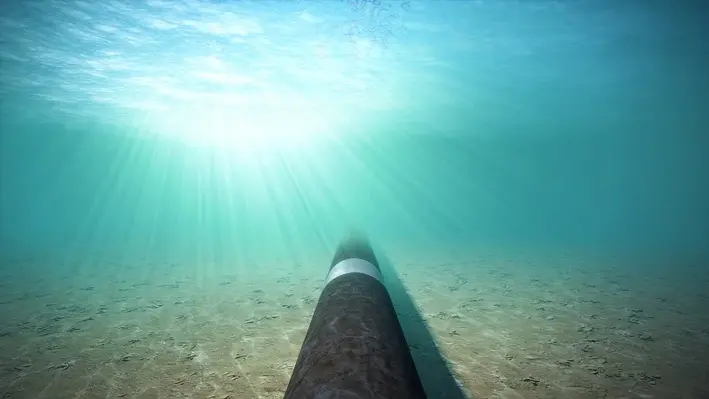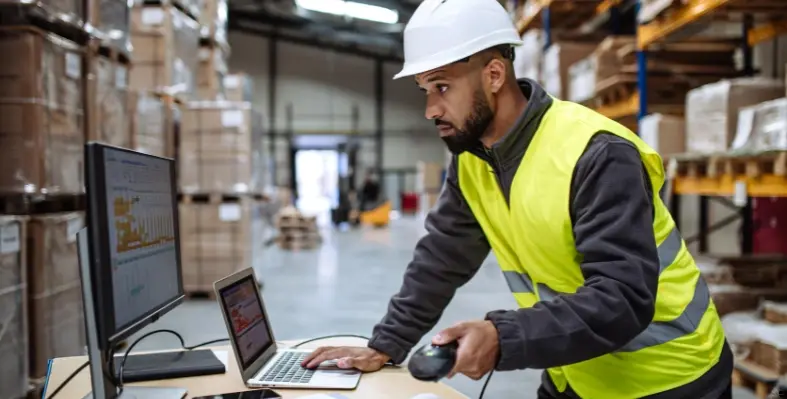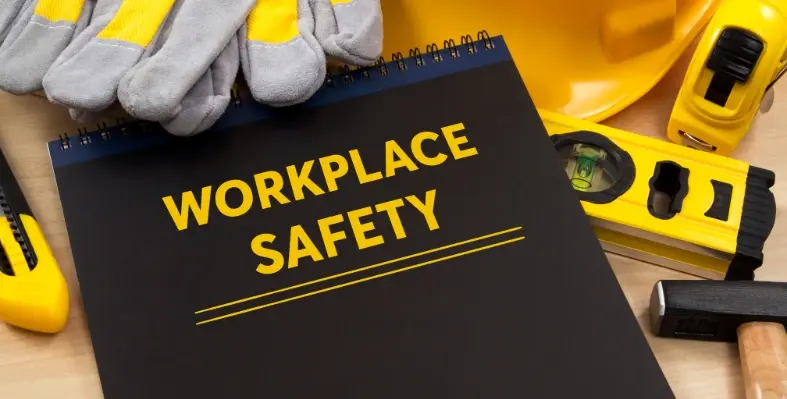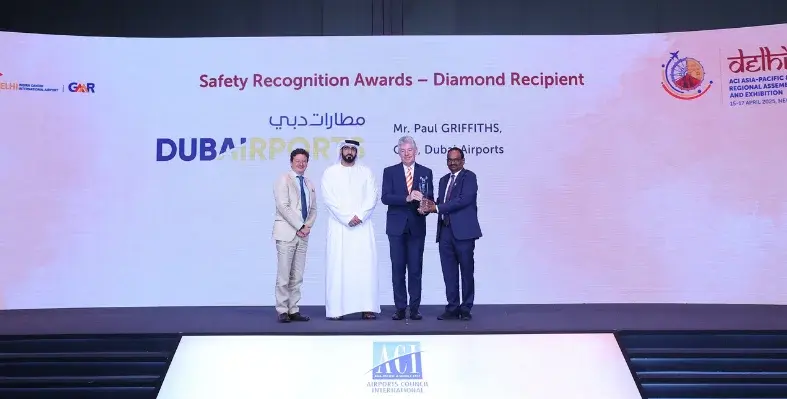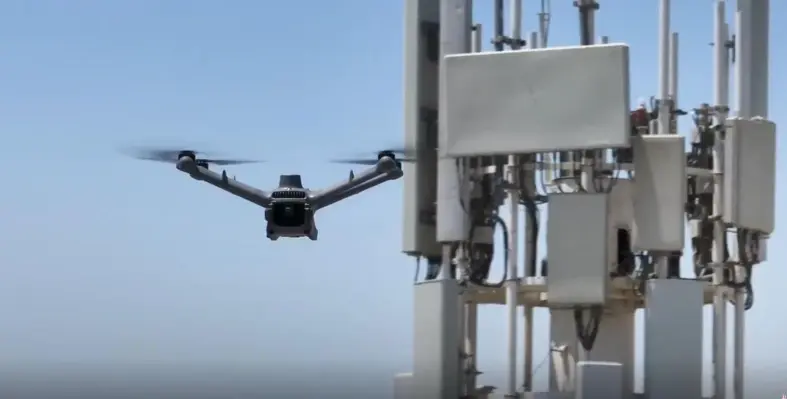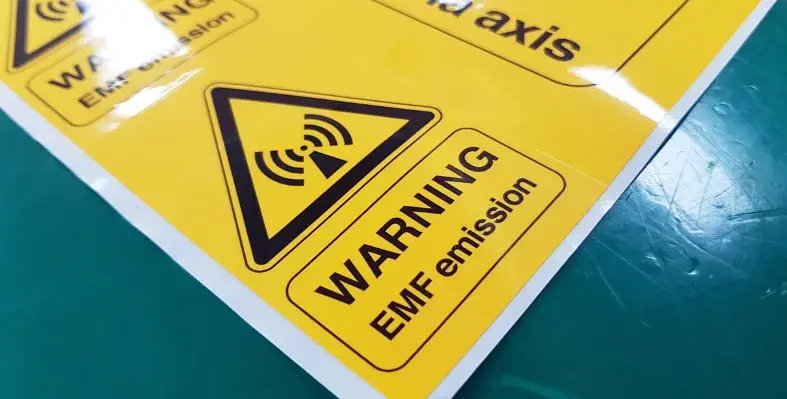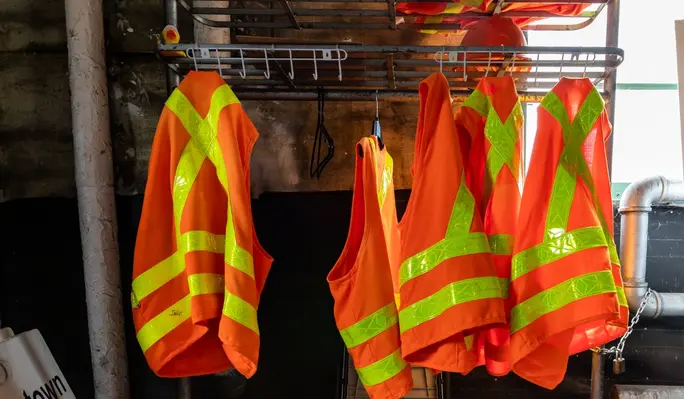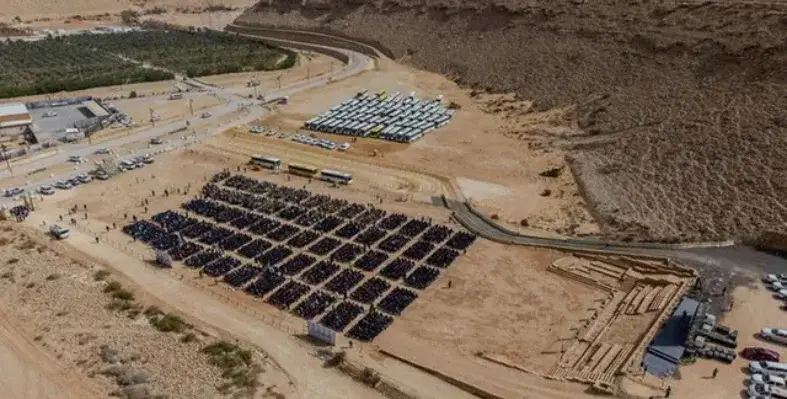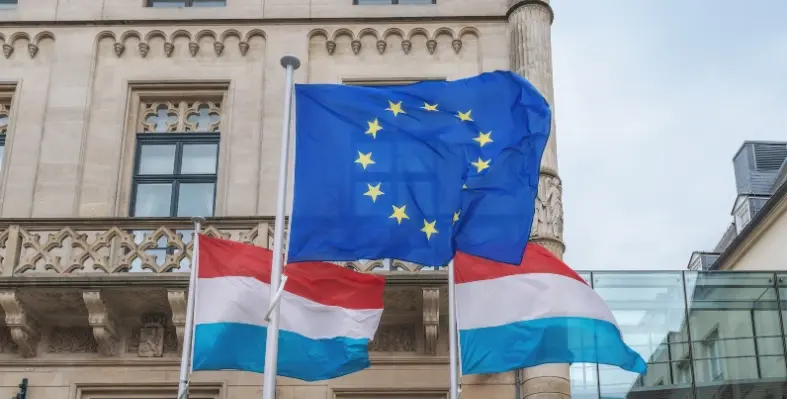Regional Coverage
Regional Coverage
- Details
- Louise Waters
- North America
- Region: North America
- Date: 23 April, 2025
- Year: 2025
An AI-driven gaming platform being developed by the Mary Kay O’Connor Process Safety Center (MKO) at Texas A&M University and EnerSys Corporation allows pipeline operators to be exposed to pipeline incidents in a controlled environment and gain experience in responding to real-world scenarios.
Pipeline leaks or failures can have a catastrophic impact on assets, people and the environment as well as causing untold financial and reputational damage. In early April this year, for example, a leaking gas pipeline sparked a huge fire on the outskirts of Malaysia’s capital Kuala Lumpur, injuring more than 100 people.
The project aims to develop a realistic training system for teams to practice handling hazardous condition response and emergency response in a collaborative learning environment. It simulates various pipeline failure scenarios, using AI to visualise how such situations can evolve, and provides measurable outcomes of the response, so that when incidents do occur, people working with pipelines can be prepared and respond more quickly and effectively.
According to an article on the Texas A&M website, MKO will provide knowledge and understanding of the pipeline and its safety issues and create mathematical models for the project, while EnerSys Corporation will facilitate research and data collection from industry.
Trial scenarios with a research and development team are planned by the end of this year, with results being incorporated into the platform.
“It’s a great opportunity for us to learn, particularly from the industrial experiences, and develop tools that enable fusion of knowledge and experience to improve safety,” said Faisal Khan, director of the Mary Kay O-Connor Process Safety Center.
A new report by the International Labour Organization (ILO) on ‘Revolutionizing health and safety: the role of AI and digitalization at work’ highlights the effectiveness of immersive virtual training environments, allowing workers to acquire new skills quickly and retain knowledge more efficiently, thereby providing a better trained and more competent workforce.
“The technology presents an important opportunity to improve the effectiveness of safety and safety-relevant training due to its abilities both to allow trainees to fail safely and to present scenarios that are difficult to replicate in the real world, either due to financial constraints or safety concerns,” it says.
- Details
- Sania Aziz
- Middle East
- Region: Middle East
- Date: 21 April, 2025
- Year: 2025
Wolters Kluwer, a global provider of professional information, software solutions, and services, has released new survey findings revealing significant trends around Artificial Intelligence (AI) adoption in Environment, Health, and Safety (EHS) management.
According to the survey, 49% of EHS functions plan to invest in AI within the next 12 months, and 77% prioritise AI skills when recruiting.
Richard Pulliam, SVP and General Manager of Wolters Kluwer EHS & ESG, commented, “AI promises to revolutionise EHS by enabling leaders to collect data, and then interpret, plan, predict and act with unprecedented speed, accuracy, and efficiency. With nearly half of EHS teams planning to invest in AI in the coming year, the ability to collect high-quality data from across the enterprise will be crucial to optimising this potential. We are deeply committed to driving innovation and providing game-changing technologies to ensure EHS teams are future-ready.”
EHS teams slow to adopt AI compared to other business functions
While AI is reshaping many industries, EHS teams have been slower to implement the technology. Only 28% of EHS practitioners reported current AI use within their departments. In contrast, 62% said AI adoption in their EHS function lagged behind other areas of their business.
Investment in AI is growing, but budget clarity is needed
Nearly half of the survey respondents reported active plans to invest in AI technologies over the next year. However, 38% were uncertain about their department’s AI investment intentions, suggesting a need for clearer communication about available budgets and strategies. Only 13% of respondents stated there were no plans to invest in AI.
Developing AI skills a rising priority for EHS teams
Building AI capabilities is becoming increasingly important. According to the survey, 25% of EHS practitioners currently have no AI skills or experience, and 61% classify themselves as beginners. Encouragingly, half of EHS functions have either already provided AI training or plan to offer it soon.
When it comes to recruitment, AI skills are highly valued. A significant 77% of respondents noted that AI expertise is an important consideration when hiring, reflecting a dual strategy of upskilling existing teams and attracting new talent with relevant capabilities.
The survey, conducted with 162 EHS professionals at the Wolters Kluwer Sustainable Performance Forum (SPF) 2025, underscores a clear shift: while EHS has been slower to adopt AI compared to other fields, investment and skills development are becoming key priorities. As businesses continue to focus on improving efficiency, safety, and compliance, AI is poised to play a critical role in transforming EHS practices.
- Details
- Louise Waters
- Middle East
- Region: Middle East
- Date: 18 April, 2025
- Year: 2025
The UK's Institution of Occupational Safety and Health (IOSH) has announced a significant training contract with Bahrain-based Gulf Aluminium Rolling Mill (Garmco)
Under the agreement, Garmco is licensed to deliver IOSH’s Working Safely, Managing Safely and Fire Safety Awareness courses. IOSH has also approved the company’s three tailored half-day courses on CoSSH, confined spaces, and permit to work.
The contract demonstrates Garmco’s ongoing commitment to enhancing the safety of its human capital as well as representing another positive step that IOSH is taking to improve workers’ health and safety in the Gulf States.
Mohamed Rafea, CEO of Garmco, said, “Becoming an IOSH-approved training provider marks a significant milestone in our efforts to foster a proactive safety culture and support our employees’ professional growth.”
He added that the partnership would enable Garmco to provide international safety training that strengthens its team’s competence and knowledge, ensuring they are better equipped to implement advanced safety practices and comply with internationally recognised safety standards.
Iain Mcintosh, senior business development manager at IOSH, said, “We are thrilled to have teamed up with Garmco. It’s another demonstration of what we can offer through our IOSH for Business initiative. We look forward to helping the company to create an internal training function that will strengthen its critical safety initiatives and enhance the expertise of its staff.”
GARMCO works proactively to ensure the health and safety of all employees, contractors and visitors through stringent measures that are governed by GARMCO’s occupational health and safety policies aligned with ISO 45001:2018 and other relevant international and national standards.
The company has a fully-equipped health centre that conducts regular medical check-ups for staff, as well as a fire station that organises fire drills and emergency evacuation exercises. Health and safety rules and guidelines are continuously communicated to all staff, and related key performance indicators are monitored on a monthly basis, together with a review of employee feedback. Job safe practice training and preventive campaigns are conducted on a regular basis, fostering a culture of occupational health and safety.
As an example, in December 2024, GARMCO organised a Safety Week campaign to raise awareness of the importance of safety in the workplace and equip employees with the necessary information and skills to protect themselves and their colleagues through interactive activities that enhance effective participation among employees.
In February, GARMCO employees participated in the fourth edition of the Bahrain Firefighter Challenge, which brought together firefighters from various government and private sectors, along with amateur participants, to in challenges simulating the field tasks of firefighters. The event contributes to enhancing professionalism among firefighters and fosters community partnership in promoting a culture of safety.
- Details
- Sania Aziz
- North America
- Region: North America
- Date: 17 April, 2025
- Year: 2025
News publications from across the USA have reported impending closures of occupational health and safety agencies in the county, in wake of the Trump administration's decisions to cut government spending. This could be disastrous for American workers, who may now have little recourse against workplace violations.
Louisiana workers may be more affected than others. The state is already known as one of the most dangerous places in America, from an occupational health and safety standpoint. According to data from the Bureau of Labor Statistics, Louisiana is ranked the sixth most dangerous state for workers in the U.S. This is thanks to the more than 200 chemical facilities and refineries which line an 85-mile stretch of the Mississippi River from Baton Rouge to the state's capital New Orleans. It has been repeatedly called "Cancer Alley", due to the high cancer rates associated with petrochemicals.
US-based publication Capital & Main has recorded a few instances. In recent years, the news publication said, there have been several chemical plant exposures or explosions in the state. In December, a suspected explosion occurred at a Westlake Corp. chemical plant near the Nutrien plant. Four workers were hospitalised in October after being exposed to ammonia at a Formosa Plastics plant.
Two individuals were injured in September when a hydrogen gas explosion occurred at the neighbouring Chevron Renewable Energy Group factory. Last month, Mathew Roberts was working at a chemical facility on the outskirts of Baton Rouge when he was involved in a forklift accident. The father of two, who was unresponsive and in severe condition, was transported from the Nutrien nitrogen facility to a local hospital and died of his injuries.
Spending cuts
His death came weeks after the Elon Musk-run Department of Government Efficiency (DOGE) announced the closure of 11 OSHA field offices. This includes one in Baton Rouge that is investigating Robert's death. It is the agency's only office in Louisiana, and its impending closure is causing anxiety among workplace safety professionals. The closures are still "under review," according to the US Department of Labor, which oversees OSHA.
In addition to the Baton Rouge office, which conducted 386 workplace inspections last year and imposed over $750,000 in penalties for major infractions, DOGE intends to eliminate field offices in Houston and Mobile, Alabama.
“Those enormous oil and petrochemical facilities with significant safety and health hazards will be inspected even less frequently than they are now,” former OSHA Director David Michaels told Capital & Main. “These closures will result in more injuries, illnesses and deaths,” Michaels added.
According to Michaels, OSHA employees in the office will have to choose between quitting the agency entirely or relocating to another region hundreds of miles away. Staff at the Baton Rouge office claimed they were not aware of any layoffs, despite rumours that have circulated since the DOGE announcement in mid-March.
- Details
- Matthew Hayhoe
- Middle East
- Region: Middle East
- Date: 16 April, 2025
- Year: 2025
The world’s busiest international airport has been awarded the Airports Council International (ACI) Safety Recognition Award 2025, recognising Dubai International’s proactive and innovative approach to aerodrome safety, positioning the airport as a leading example of safety leadership in global aviation
Presented during the 2nd ACI Asia-Pacific & Middle East Regional Assembly and Conference in New Delhi, India, the award was accepted by Paul Griffiths, CEO of Dubai Airports, and Buti Qurwash, Senior Vice President of Safety & Security. ACI’s recognition is given to airport operators demonstrating a commitment to safety that extends beyond regulatory compliance, with a focus on operational resilience and risk management.
The airport has implemented several internal initiatives aimed at fostering a culture of safety. These include the Safety Superstar Award, highlighting exemplary individual safety practices, as well as a confidential reporting system to encourage early identification of safety concerns by employees at all levels.
Interactive educational tools, such as safety videos and targeted surveys, along with joint campaigns between departments and partners, further reinforce safety awareness and shared responsibility. Through the use of data, smart technologies, and real-time insights, DXB is enhancing its capacity to manage operational risks and anticipate future challenges.
Griffiths noted that safety at DXB is seen not only as a regulatory obligation but as a foundational element of airport operations. This recognition from ACI reflects the efforts of teams and partners working collaboratively to ensure a safe, smooth experience for passengers and stakeholders alike.
- Details
- Sania Aziz
- Middle East
- Region: Middle East
- Date: 14 April, 2025
- Year: 2025
e& UAE has launched a new initiative to modernise telecom tower inspections using autonomous drones enhanced with artificial intelligence (AI).
The rollout marks a significant step in transforming infrastructure maintenance, offering improved safety, faster operations, and reduced environmental impact.
The system integrates real-time data analytics, autonomous flight, and AI to streamline the monitoring and upkeep of telecom towers throughout the country. Flights are operated remotely via the company’s Drones Operations Centre, where teams monitor each mission in real time, enforce safety protocols, and verify the accuracy of inspections.
Unlike manual inspections that often involve significant risks and downtime, these drones can autonomously navigate complex sites, helping to protect workers while increasing the speed and efficiency of assessments. The drones are also designed to assist in emergency response scenarios, where they can support the delivery of aid and ensure network continuity in hard-to-reach or hazardous locations.
Using advanced AI-powered analytics, the drones can identify structural faults or irregularities on the spot, allowing maintenance teams to act before problems escalate. This proactive maintenance approach reduces potential service disruptions and extends the lifespan of infrastructure.
Beyond structural inspections, the drones can also support oversight of safety procedures and detect unauthorised activity around telecom assets, contributing to a more secure and resilient network.
All data collected during inspections is fed into e& UAE’s digital infrastructure management platform. This enables predictive maintenance planning, more efficient asset use, and a smaller carbon footprint compared to traditional methods of tower inspection.
Marwan bin Shakar, acting chief technology & information officer, e& UAE, said, “The integration of autonomous drones into our operations reflects our commitment to reimagining network operations through cutting-edge innovation that improves reliability, safety and sustainability. Through AI-powered insights and real-time control, we are enhancing the safety and accuracy of telecom tower inspections while enabling faster, data-driven decisions that future-proof our infrastructure. And with the support of the Drones Operations Centre, we’re demonstrating how technology can elevate operational resilience while supporting the UAE’s broader ambitions for smart, sustainable cities.”
- Details
- Matthew Hayhoe
- Europe
- Region: Europe
- Date: 11 April, 2025
- Year: 2025
As EU-OSHA research reveals that tech innovation and emerging mental health issues are impacting workers, the association has unveiled a suite of resources (including dedicated publications) about the risks of 'invisible' challenges in the workplace
A dedicated 11-page publication, 'Electromagnetic fields: present and future challenges for occupational safety and health', examines the risks of electromagnetic fields, such as cancer, and discusses how excitement around the opportunities that EMFs present cannot be divorced from the risks and challenges they introduce to occupational health and safety.
Similarly invisible yet almost as devastating are the risks proposed by mental health challenges in the workplace. One such issue has been dubbed 'eco-anxiety', and refers to the worry induced by climate change and environmental damage. The 12-page 'Eco-anxiety and its implications for occupational safety and health' report hopes to explore how practitioners and policymakers can address eco-anxiety concerns and mental health challenges.
A full breakdown of emerging HSE risks and challenges has been added to EU-OSHA's website alongside the new publications.
- Details
- Louise Waters
- Middle East
- Region: Middle East
- Date: 10 April, 2025
- Year: 2025
Abu Dhabi-headquartered EMSTEEL, one of the largest publicly traded steel and building materials manufacturers in the region, has been recognised as a 2025 Steel Sustainability Champion by the World Steel Association (worldsteel) for the second consecutive year
The recognition was presented during the worldsteel Special General Meeting held in Sydney, Australia. Now in its eighth year, the Steel Sustainability Champion accolade—part of The Steelie Awards—honours companies demonstrating exceptional commitment to sustainable development in the global steel industry. They have to fulfil stringent criteria, including signing the worldsteel Sustainability Charter, meeting 20 sustainability criteria, providing Life Cycle Inventory (LCI) data, and participating in worldsteel’s initiatives such as the Steelie Awards or the Safety and Health Recognition Programme.
The recognition is a direct result of the significant progress EMSTEEL made throughout 2024 in enhancing sustainability. For example, the company has partnered with Masdar to launch the MENA region’s first green hydrogen demonstration project for the steel industry, positioning EMSTEEL as a leader in the UAE’s hydrogen economy and a driving force for providing sustainable solutions for the construction and manufacturing sectors.
EMSTEEL is also active on the global stage. As a co-chair of the Alliance for Industry Decarbonisation, an initiative led by the International Renewable Energy Agency, EMSTEEL is working alongside 84 partners to set joint decarbonisation targets, including tripling renewable energy production and reducing greenhouse gas emissions by 54% by 2030.
As part of its ambitious decarbonisation roadmap, EMSTEEL aims to reduce its greenhouse gas emissions by 40% in its Steel Business Unit and 30% in its Cement Business by 2030, with the ultimate goal of achieving net-zero emissions by 2050. The company has already made substantial progress, having reduced its Scope 1 and Scope 2 emissions intensity by 23%.
Engineer Saeed Ghumran Al Remeithi, Group CEO of EMSTEEL, said, “Being named a worldsteel Sustainability Champion is a true honour and a reflection of the dedication and hard work of everyone at EMSTEEL. It reinforces our commitment to driving the transition towards a low-carbon future, not just for the steel industry, but for the entire global industrial landscape. With a continued focus on innovation, efficiency, and environmental stewardship, we will build a cleaner, more sustainable tomorrow.
“As the first steelmaker in the world to capture part of its CO₂ emissions, we have been able to operate with 45% less carbon intensity than the global average and are excited to continue playing a cataclysmic role in decarbonising this hard-to-abate sector and the downstream supply chain.”
- Details
- Sania Aziz
- North America
- Date: 9 April, 2025
- Year: 2025
The National Institute for Occupational Safety and Health (NIOSH), a federal agency tasked with researching and promoting workplace safety, is undergoing a dramatic restructuring that could impact occupational health across industries, including those in the Gulf of America region.
Announced in early 2025, the overhaul has sparked concerns about weakened protections for workers in high-risk sectors like offshore oil and gas, mining, and firefighting.
NIOSH, established under the 1970 Occupational Safety and Health Act, conducts research and provides recommendations to prevent workplace injuries, illnesses, and fatalities.
Its work has been critical for industries prevalent in the Gulf region, where offshore platforms face hazards like explosions, toxic exposures, and severe weather.
However, recent reports indicate that NIOSH is facing massive layoffs, with up to 90% of its workforce potentially cut.
This restructuring, driven by Health and Human Services Secretary Robert F. Kennedy Jr., involves merging NIOSH into a newly formed Administration for a Healthy America (AHA), alongside other agencies like the CDC.
A threat to HSE operations in the region
Critics, including labour unions and public health experts, warn that the layoffs and merger threaten NIOSH’s ability to fulfill its mission.
The agency’s research into workplace hazards, such as silica dust for miners, PFAS chemicals for firefighters, or hydrogen sulfide for oil workers, requires specialised expertise that could be lost.
For Gulf workers, NIOSH’s studies on offshore safety protocols and heat stress are vital, given the region’s hurricane-prone environment and labour-intensive rigs.
The agency’s data-driven recommendations often inform OSHA regulations, which set enforceable standards.
A diminished NIOSH could mean fewer updates to these protections, leaving workers vulnerable.
The restructuring has also raised questions about funding and priorities. While the AHA aims to streamline public health efforts, skeptics argue it may prioritise broader health initiatives over workplace-specific research.
Congressional oversight is expected, with hearings planned to assess the impact on industries reliant on NIOSH’s expertise. For now, the agency’s remaining staff face uncertainty, with morale reportedly low.
In the Gulf, where economic activity hinges on safe operations, the NIOSH cuts could have ripple effects.
Without robust research, employers may struggle to address emerging risks, potentially increasing accidents or exposures.
Stakeholders are urging policymakers to preserve NIOSH’s capacity to protect the nation’s workforce.
Also read: DOGE terminates Louisiana federal agency leases; OSHA affected
- Details
- Matthew Hayhoe
- Middle East
- Region: Middle East
- Date: 7 April, 2025
- Year: 2025
2,864 workers attended a construction safety lesson at Diriyah's Wafi Safar development, setting a new Guinness World Record for the largest construction safety lesson
The 30-minute lesson covered the 'Top Five Critical Safety Hazards in the Construction Industry'.
A dedicated outdoor venue was constructed specifically with the world record in mind.
Diriyah Company's group CEO, Jerry Inzerillo, ceelebrated the record. "This new world record, in which Diriyah’s project staff gathered in Wadi Safar, one of Diriyah Company’s masterplans covering an area of over 62 sq km demonstrates our unwavering commitment to safety and our goal of ensuring everyone returns home safely to their families.
"Our Health & Safety management system goes above and beyond to ensure and protect the welfare of employees, contractors and on-site teams working across the Diriyah project."
Diriyah is one of several giga-projects backed by the Public Investment Fund, and aims to provide homes for around 100,000 residents upon completion.
- Details
- Louise Waters
- North America
- Region: North America
- Date: 4 April, 2025
- Year: 2025
Small businesses are adopting a reactive approach to safety, rather than proactively guarding against potential risks, according to Pie Insurance's 2025 State of Workplace Safety Report
The report is based on a comprehensive workplace safety survey of 1,018 small US business owners (up to 500 employees), providing insights on safety concerns, workplace accidents, AI trends and more.
According to the survey, 75% of small businesses experienced workplace injuries in the past year, with nearly half saying they had to improvise safety measures due to a lack of proper equipment. Half of those injuries were reported to be preventable. Preventing such injuries could dramatically reduce injury-related costs such as medical expenses and compensation costs, as well as the costs incurred by operational downtime, with small businesses losing four employee workdays and three full business days to workplace injuries.
The most common preventable workplace injuries were reported to be mental health-related injuries (22%), slips, trips and falls (20%) cuts and lacerations (18%) and overexertion and repetitive strain injuries (13%).
Many of these injuries could be prevented by taking proactive measures such as ensuring employees have the right equipment and PPE; conduct regular engaging safety training, encouraging employees to report safety concerns without fear of reprisal, and performing regular workplace safety audits, the report says.
Growing role of AI
The report highlights the growing role of AI in preventing accidents, with 65% of business leaders thinking it will improve safety in the next five years, and 44% already using it to improve safety and efficiency. From predictive analytics that anticipate risks to AI-driven telematics that monitor driver behaviour and automated safety training, AI is facilitating a more proactive approach to preventing accidents and reducing risks.
Also highlighted is the increased impact of mental health on workplace safety, with stress, burnout and mental-health related injuries accounting for 22% of workplace injuries, while only 52% of firms have mental health related safety protocols in place. A culture where employees feel safe and supported needs to be created, with measures such as providing employee assistance programmes (EAP), offering wellness initiatives and creating an open culture where employees are not afraid to raise mental health challenges.
Employee resistance to safety measures is another challenge cited, with suggested measures being to involve employees in safety discussions and decision making, make training engaging and rewarding employees who follow safety protocols and leading by example, with the leadership walking the walk.
Businesses that take workplace safety seriouslly will have a competitive edge, the report stresses. “By implementing proactive mental health support, investing in the right equipment, leveraging AI and ensuring employees follow safety protocols, small businesses can reduce injuries, lower costs and create a more productive workforce,” it says.
- Details
- Sania Aziz
- Europe
- Date: 2 April, 2025
- Year: 2025
In a significant move to address evolving workplace health challenges, Luxembourg’s health minister, Martine Deprez, has pledged to reactivate the High Commission for Occupational Diseases.
The decision, announced following a pivotal meeting on 2 April, marks a turning point in the nation’s approach to occupational health, particularly as it grapples with the emerging risks posed by climate change.
The push to revive the commission stems from a January 2025 motion tabled by déi Lénk deputies David Wagner and Marc Baum.
Their proposal called for a reassessment of occupational health policies to include diseases linked to climate-related factors, a growing concern as rising temperatures, extreme weather, and shifting environmental conditions begin to impact workplaces across the Grand Duchy.
The motion gained traction, culminating in this week’s commitment from Minister Deprez to breathe new life into the commission.
The High Commission, established under Luxembourg’s robust labor framework, is tasked with identifying and cataloging diseases directly attributable to workplace conditions.
Updating disease list
Historically, its work has ensured that workers afflicted by occupational illnesses, ranging from respiratory conditions caused by industrial exposure to musculoskeletal disorders tied to repetitive tasks, receive recognition and support.
However, as medical knowledge advances and new risks emerge, the need for an updated list has become undeniable.
Deprez emphasised that the commission’s revival would align Luxembourg’s policies with the latest scientific insights, particularly those highlighting the intersection of climate change and occupational health.
Opposition voices have largely welcomed the move. Djuna Bernard, a deputy from déi Gréng, described it as “a positive and necessary step” in safeguarding workers’ well-being.
Outdoor workers, in particular, are increasingly exposed to extreme heat and UV radiation, while indoor environments contend with poor air quality linked to wildfires and pollution.
The reactivation of the commission signals Luxembourg’s proactive stance in a world where occupational health is no longer confined to traditional hazards.
Experts anticipate that the updated list could include conditions such as heatstroke, exacerbated respiratory illnesses, and psychological stress tied to climate-induced disruptions—issues that have gained prominence in medical literature over the past decade.
The commission’s work will also likely draw on international models, with countries like France and Germany already adapting their own occupational disease frameworks to account for environmental factors.
For now, the timeline for the commission’s first meeting remains unclear, though Deprez has promised swift action.
According to Luxembourg Times, left-wing lawmakers cited that “Studies conducted in France showing that people who frequently work in conditions of thermal stress (at least six hours per day, five days per week, for two months of the year) are more likely to suffer from kidney diseases or acute kidney injuries.”
